THIS
PAGE IS ALWAYS UNDER CONSTRUCTION, SO PLEASE VISIT AGAIN.
"LA
FORCE PUBLIQUE" OR "DE OPENBARE WEERMACHT" IN THE
BELGIAN CONGO.
B.
Europeans' uniforms 1885-1903.
During
the first years after the Congo Free State was founded it was clear that officlals
had other things on their mind than creating a uniform for the European personnel,
but already on 31th October 1888 (two weeks prior to the publishing of the paper
about the organisation of the FP) the "Décret prescrivant le
port d'un uniforme aux fonctionnaires au service de l'Etat en Afrique"
was issued. The uniform was the same for all officials of the Congo Freestate,
except for the Governor-General, the Vice-Governor-General and the Inspector-General.
Only specific insigna indicated to what department an official belonged. For
the FP this was a golden Belgian Lion above the stripes of rank on the left
sleeve. the clothing was of West-European style without making provision for
the tropical climate. Only the tropic helmet and the white uniform were slight
adaptions in that direction.
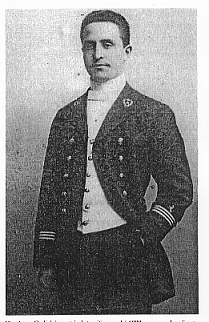 Fig
1: Second Lieutenant in full dress model 1888, redingote slightly shortened.
Fig
1: Second Lieutenant in full dress model 1888, redingote slightly shortened. |
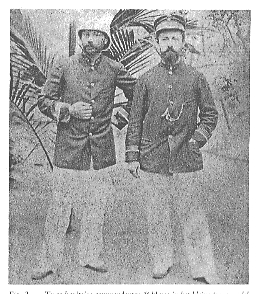
Fig
2: Two Captain-Commandants 1st Class in service dress model 1888.
|
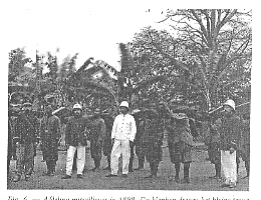
Fig
3 (above): Machinegun detachment in 1899. The whites are wearing service
dress model 1888. The blacks are wearing standard Force Publique uniforms.
Fig
4 (right): Second Lieutenant in full dress, redingote full lenght (1888).
|
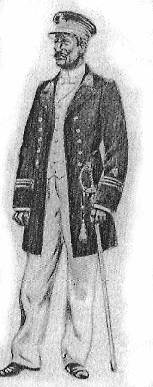 |
The
full dress - for ceremonial purposes (when civilians such as judges and lawyers
were to wear a black smoking and top hat) was a long coat (redingote in royal
blue) with an open collar. In the corners of the lapels figured (in goldthread)
a fivepointed star, topped by a crown and double palmleafs. The coat had two
rows of five guilded buttons embossed with the Belgian Arms, but had no pockets
apart from the small breastpocket. Under the coat a white worsted jacket with
a single row of 8 embossed buttons and a white shirt & white bow tie were
worn. The trousers were made from the same material and colour as the coat or
in a white fabric. The headcover was a white tropic helmet (with a Belgian Arms
metal insigna on the front) or a cap in royal blue with (above the rank stripes)
a embroided golden fivepointed star topped by the royal crown (fig 4).
The
service dress was a short tunic in royal blue or white with five buttons (guilded,
embossed with the Belgian Arms). On the right side of the collar figured an
embroided fivepointed golden star and on the left sleeve (above the rank stripes)
an embroided lion. This tunic was worn with royal blue or white trousers (fig
2 & fig 3).
The
rank stripes were worn on the cuffs and on the cap (on the white uniform on
removable blue strips). Apart from small changes such as the creation of the
ranks of Captain-Commandant 1st and 2nd Class (1890) and those of first and
second "sous-officier" or "onderofficier"
(not so much meaning "sergeant" than rather more general "higher
ranking NCO") together with the cancelling of the rank of "adjudant"
(petty officer), the table 1889-1900 as listed under "European's uniforms
model 1903" is also correct for the period 1885-1888.
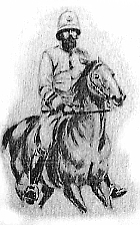 |
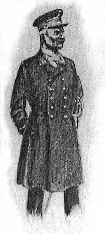 |
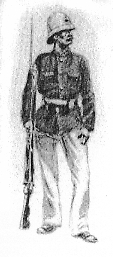 |
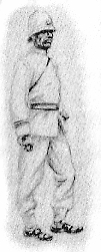 |
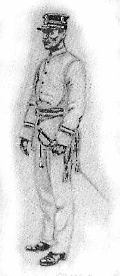 |
|
Fig
5: officer on horseback (1888).
|
Fig
6: officer in full dress (1888).
|
Fig
7: NCO in full dress (1888).
|
Fig
8: Katanga police (1900).
|
Fig
9: Katanga police (1900).
|








